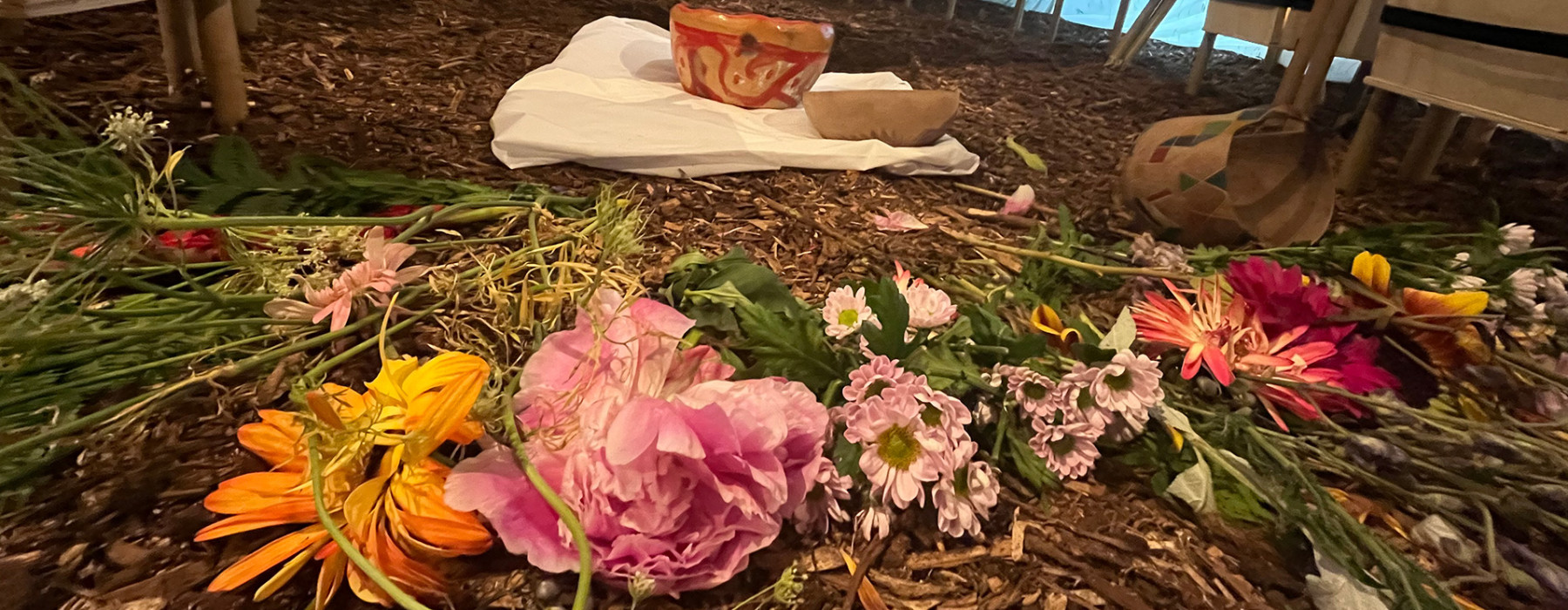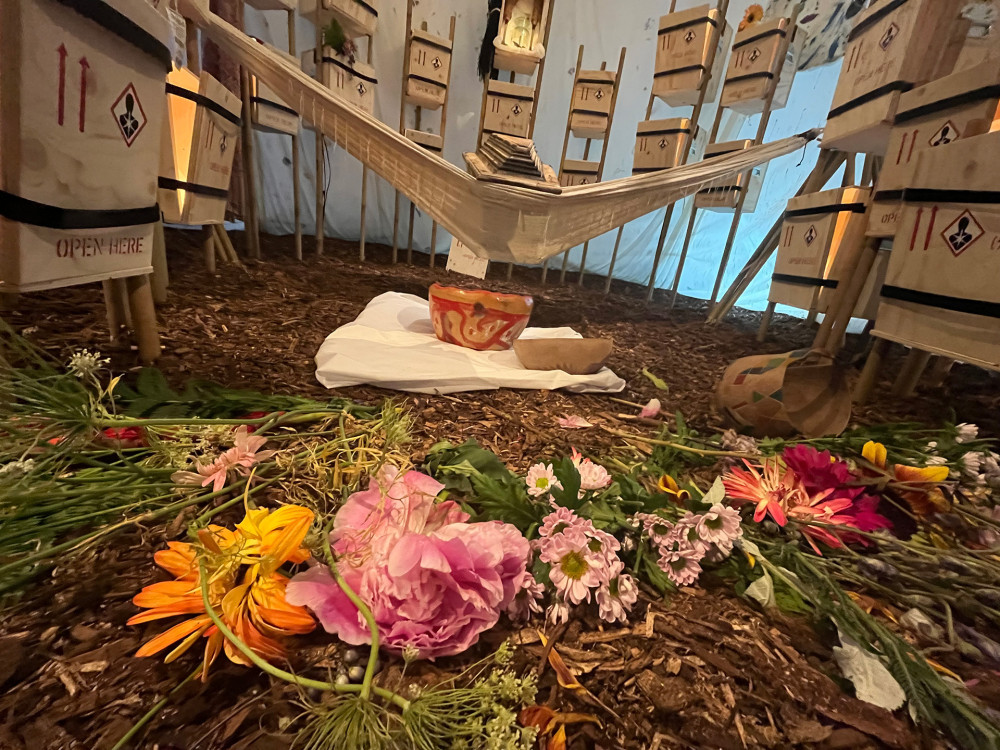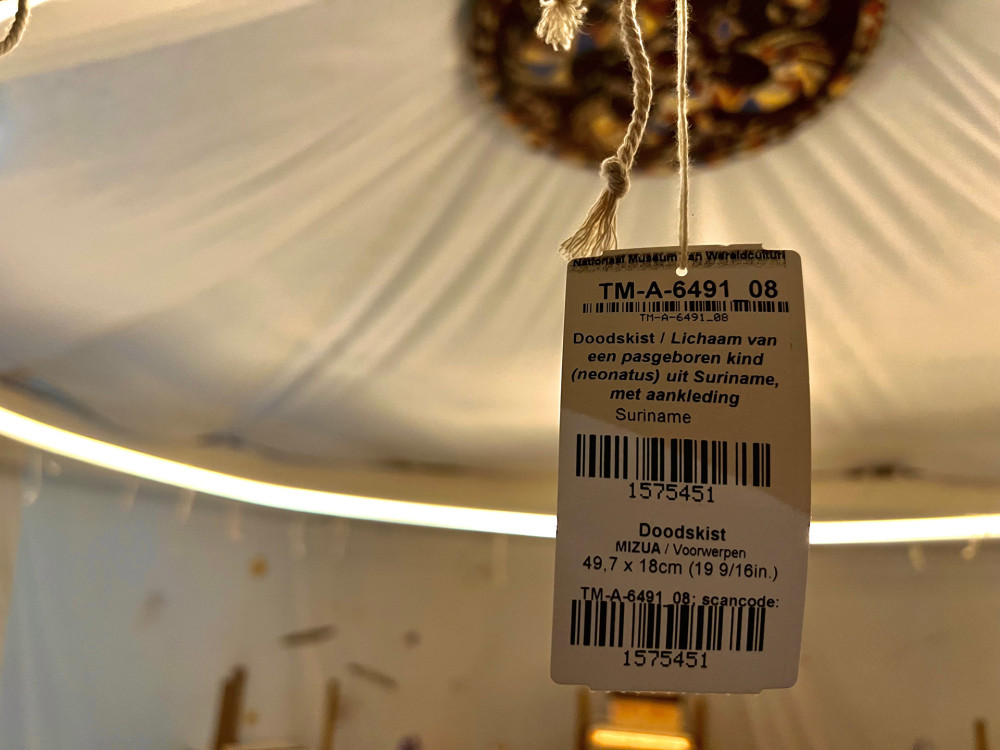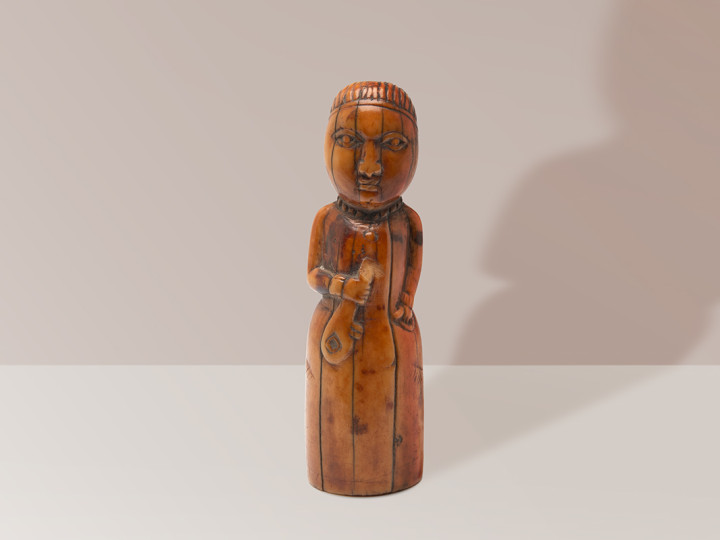Manuwi C. Tokai teki na verantwortu fu meki wan altaar fu memre den fosisma
Wan wrokomakandra nanga difrenti grupu
Luku bun! Den pisi tori di de fu leisi dya, kan tyari sari gi den sma di na srafuten libi marki na baka yeyefasi. A lasi fu wan granwan noso pikin sa tyari furu sari.
Dedebonyo fu den granwan fu Afrikansrafu de na ini na wereldmuseum
Na kómpu fu a wereldmuseum e teri dri dusun siksi hondro fotenti nanga seibi sani fu den granwan fu den Afrikansrafu. Moro furu yu sa syi pisi fu skin, so leki bonyo, wiwiri, noso libisuma tifi, di den meki kon tron moisani.
A moro sari pisi fu syi na den tutenti-na siksi nyunnyun pikin di gebore dede noso di no libi langa. Den poti den na ini grasibatra ini libiwatra.
Wan altaar fu memre
Manuwi C. Tokai meki makandra nanga tra grupu, wan altaar fu memre ala den grawan fu na srafuten di de na ini a museum. Na altaar disi musu de leki wan presi fu memre den.
Na gronprakseri fu na pisi tori disi kon na fesi fu na ingi nyunnyunpikin ede, di de na ini a museumdepot. Alafa den no man taki nanga leti pe na nyunnyun pikin disi komopo, wi sabi dati na nyunnyun pikin disi kon na mindri a collectie fu Artis na ini a museum ini negi-ti-honderd-dri-entutwenti- dri.
Manuwi C. Tokai teki na verantwortu fu aksi dati a nyunnyun pikin kon ini anu fu na libimakandra baka.
Na wereldmuseum e kraka na prakseri disi en makandra nanga a ministeria fu OCW den e wroko fu meki na pisi tori disi teki presi..
Wan las-las yeri fu na srafuten
Wan bigi pisi fu den sani fu den fosisma fu wi na ini a wereldmuseum tyari kon na wan na ini na srafuten, spesrutu na ini a ten fu na onderzoek noso sriti fu den ras. Na ini wan ten pe bigi difrenti ben de fu makti, nanga tranga den buru teki den sani fu den fosisma fu unu nanga den fosisma srefi fu tyari go na den kondre. Disi den du, sondro fu aksi primisi.
Nanga krin prakseri fu di den kon sabi, dati nanga tranga nanga sondro primisi den pisi tori fu den fosisma fu unu doro na den kondre, na wereldmuseum e firi syen. Den e teki verantwortu fu yepi kraka na gronprakseri fu den grupu di e suku leti nanga kenki fu na pisi tori disi.
Libisuma
De fosisma fu wi nanga den bonyo fu den, di de ete, a no moi prenki fu poti na ini museum.
Den na suma di ben abi wan tori, wan denki, wan fasi fu libi, di ben abi yeye firi nanga prakseri. Gi furu grupu den historia na wan fu pen nanga lasi. So srefi wan historia pe yu no sabi yu srefi moro nanga wan fu pe leti no e taki. Den suma disi den no e poti moro na lukupresi. So srefi na ini na installatie fu sisa Manuwi C. Tokai yu no e syi den pisi tori fu den fosisma fu wi. Den e kibri den na ini a museumdepot te leki den feni na yoisti presi di musu de wan libismafasi.
Onderzoek noso sriti nanga takimakandra
Na wereldmuseum e du sriti fu sabi pe den suma disi komopo. Na sriti e du makandra nanga herkomstgemeendchappen na ini Witmankondre nanga dorosey kondre fu makandra fu suku fasi fu lobi lobi, lespeki fasi, sakafasi nanga libisuma fasi fu man tyari na historia disi na wan bun fasi.
Te we taki fu na tori disi, dan a feni srefi, row, takimakandra nanga na betre wroko fu yeye musu de na gronprakseri.
Makandra tapu na pasi fu fri
Na wereldmuseum e gi leti fu na hati pisi tori disi en e wroko fu strey gi respeki, opo yeye nanga betre wroko. Wi e kari difrenti grupu, lukuman nanga alasma di e tenapu na ini a denki fu leti fu yepi makandra fu prakseri fa fu tyari na boskopu fu na historia na tapu wan bun nanga lespeki fasi. Nanga fa wi kan sorgu gi wan lespeki tamara gi makandra nanga gi den fosi sma fu wi nanga den bakapikin. A winsi srefi unu no sabi pe den komopo, wi e kari ini wan sma fu kon kenki prakseri nanga unu.
Yu wani sabi moro?
Yu abi aksi, wan sabi moro ?.Yu na fu wan orga? Yu wani kenki prakseri? Go na unu collectiewebsite (zoekterm: menselijke resten) noso seni wan e-mail go na collectieinformatie@wereldmuseum.nl



